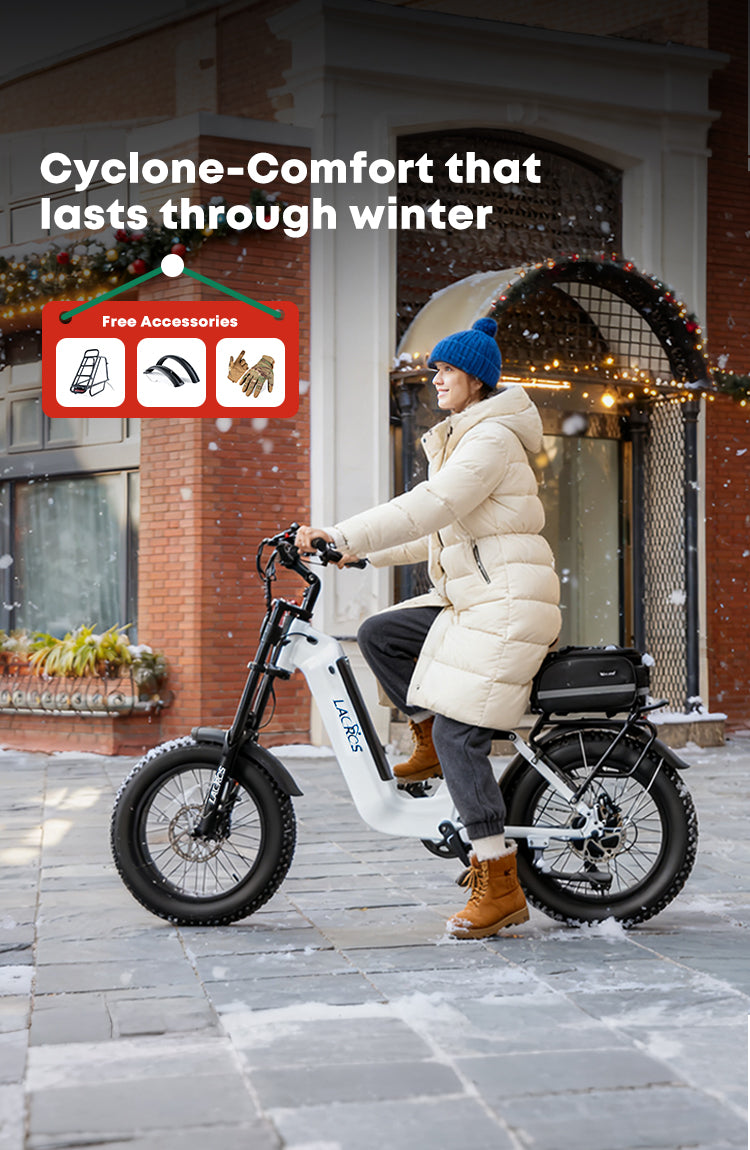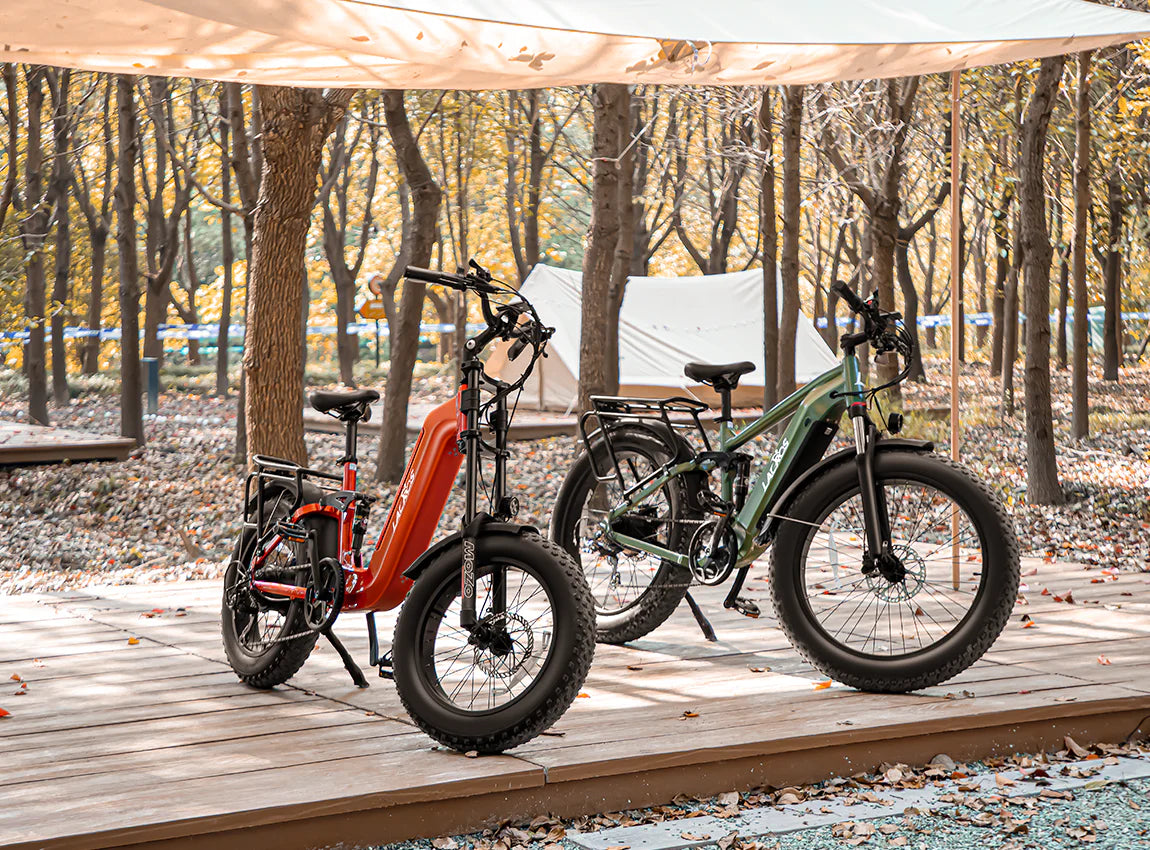As e-bikes gain popularity, many riders are considering faster, more capable options. Among them, the Class 3 electric bike stands out for its high speed, strong performance, and commuter-friendly design. This guide explains what defines a Class 3 e-bike, how it differs from other classes, key performance factors, benefits, limitations, and tips for choosing the right model.
What is A Class 3 Electric Bike
A Class 3 Electric Bike is a pedal-assist bicycle designed to support higher speeds while remaining street legal in most regions. To qualify as Class 3, a bike must meet these standards:
- Pedal-assist only (PAS) — motor activates only when pedaling.
- Top assisted speed: 28 mph (45 km/h).
- Motor power: typically up to 750W (varies by state).
- Speedometer required.
- Throttle rules: vary by state — some restrict or limit throttle use.
These features make Class 3 models ideal for riders who want to travel faster, keep up with traffic, or cover longer distances efficiently.
What Makes Class 3 E-Bikes Different From Other Classes
Understanding the differences between e-bike classes helps riders choose the right model:
Class 1
- Pedal assist only.
- Assistance up to 20 mph.
- Most widely allowed on paths and trails.
Class 2
- Throttle and/or pedal assist.
- Also capped at 20 mph.
- Good for casual riding or minimal pedaling.
Class 3
- Pedal assist up to 28 mph.
- Stronger motors and upgraded components.
- Best for commuting and long-distance riding.
In short, Class 3 Electric Bikes offer the highest pedal-assist speed allowed for street use, without requiring a license in most areas.
Also read: Exploring the Differences Class 1, Class 2, and Class 3 Ebikes
Also read: Are Ebikes Considered Motorized?
Class 3 Electric Bikes Performance Factors: Speed, Terrain, and Wheel Size
Class 3 Electric Bikes appeal to riders because they’re built for efficiency and stronger performance. Three elements shape the riding experience:
1. Speed
The 28 mph assist limit helps riders:
- Reduce commute time
- Maintain smoother flow in city traffic
- Travel farther with less effort
2. Terrain
Most Class 3 bikes include:
- Higher-torque motors
- More robust drivetrains
- Stronger braking systems
These improve performance on:
- City roads
- Rolling hills
- Hard-packed or light gravel paths
3. Wheel Size
- 27.5"/700c wheels: efficient, stable, great for road commuting.
- 20"–26" fat tires: excellent traction, comfort, and mixed-terrain capability.
Choosing the right wheel size depends on where you ride most often.
Popular Class 3 E-Bike Models and Why Riders Choose Them
Two well-known Class 3 Electric Bikes from Lacros—the Thunder and the Cyclone—are popular among riders seeking strong performance, long range, and true all-terrain capability.
Shared Strengths of the Thunder and Cyclone
- Full suspension for smoother riding on mixed terrain
- 1400W peak power for strong acceleration and hill climbing
- 48V 20Ah Samsung battery with up to 90 miles of max range
- 28 MPH top speed
- 4" all-terrain fat tires
- 400 lbs load capacity
These similarities make both bikes suitable for commuting, daily riding, and light off-road exploration.
Key Differences: Thunder vs. Cyclone
Lacros Thunder
- 26" x 4" wider fat tires — better stability and grip for off-road riding
- Step-over frame for a more traditional and sporty posture
Lacros Cyclone
- 20" x 4" fat tires — more agile and maneuverable in urban environments
- Extra-long 7" step-through frame for easy mounting and improved comfort
In short, the Thunder is ideal for riders looking for a more off-road-oriented Class 3 Electric Bike, while the Cyclone is perfect for those who prioritize accessibility and maneuverability.
Benefits and Limitations of Class 3 Electric Bikes
Benefits
- Faster travel and shorter commuting time
- Better hill climbing with stronger motors
- Ideal for long-distance riding
- More capable in urban traffic
- Encourages frequent riding and fitness
Limitations
- Not allowed on all bike paths or shared trails
- Some states require helmets or have age restrictions
- Higher speeds demand better braking and awareness
- Usually more expensive than Class 1 or Class 2 models
Despite these limitations, many riders find Class 3 e-bikes to be the best balance of speed, versatility, and practicality.

Class 3 Electric Bike Safety Guidelines and Legal Requirements Across States
Because Class 3 Electric Bikes operate at higher speeds, laws vary by state. Common rules include:
- Minimum rider age (often 16+)
- Helmet requirements
- Bike lane vs. shared-path restrictions
- Speedometer requirement
- Throttle limitations in some states
Always check your local regulations, especially if you plan to ride on shared-use paths or trails.
Also read: The Ultimate Guide to E-Bikes on Trails: Laws, Myths, and Classification
When and Where You Should Ride a Class 3 Electric Bike
Ideal environments:
- City commuting
- Long-distance road riding
- Paved bike lanes
- Urban traffic areas
- Fitness riding with higher speed goals
Less ideal:
- Mountain bike trails
- Narrow multi-use paths
- Areas with strict speed limits
- Regions where Class 3 bikes are restricted
Choosing appropriate riding environments ensures safety and compliance.
Buying Tips for First-Time Class 3 E-Bike Shoppers
When buying a Class 3 Electric Bike, keep these key points in mind—many come directly from real rider discussions in the community:
Avoid Bikes That Promote “Unlocking” or Illegal Modifications
Some brands sell Class 2 bikes that can be “unlocked” to 28 mph, or Class 3 bikes with optional throttles. Community riders warn that once modified beyond its official class, the bike may no longer be legally considered an e-bike and could pose safety risks.
Check Local Laws—Don’t Rely on Rider Assumptions
Many riders misunderstand what’s actually allowed. Before buying, confirm with your local police department or DMV whether Class 3 bikes can use throttles, where they can ride, and what limits apply. Local regulations often override state rules.
Choose the Right Fit and Prioritize Safety
Test ride when possible, consider wheel size and suspension based on your terrain, and make sure the bike has quality brakes and proper safety gear.
Buy from Brands with Clear, Honest Specifications
Select models that follow legal classifications and avoid sellers who promote borderline upgrades or unclear motor ratings.
Ready to Find Your Ideal Class 3 Electric Bike? Explore the Lacros Thunder and Cyclone, compare their features, and discover which model best matches your riding style. Your next Lacros adventure starts here.
FAQ
- Q: How fast can a Class 3 Electric Bike go?
- A: 28 mph with pedal assistance.
- Q: Do I need a license to ride one?
- A: Usually no, but local rules vary.
- Q: Are throttles allowed?
- A: Depends on state laws—some allow limited throttle use.
- Q: Can Class 3 e-bikes go on trails?
- A: Often not. Many natural-surface trails restrict them due to speed.





Share:
Are Electric Bikes Automatic? A Complete Guide to Automatic vs. Manual E-Bike Systems
Can You Ride an E-Bike in the Rain?